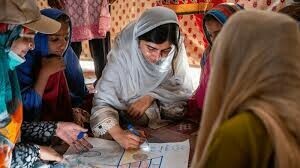ISLAMABAD: Pakistan’s exports of merchandise posted a paltry growth of 1.2 per cent in July from a year ago, the Pakistan Bureau of Statistics said on Monday.
The export proceeds rose to $1.64 billion in the first month of the current fiscal year from $1.62bn over the corresponding month of last year. The disappointing data comes despite multiple currency depreciations since last July that have seen the rupee sink by 17pc.
On the upside, however, the data showed an equally paltry growth in imports and the trade deficit. Imports recorded a growth of 0.6pc to $4.84bn in July from $4.8bn a year ago.
As a result, the merchandise trade deficit up by 0.3pc in July, which is the lowest monthly growth in the preceding 12 months.
It rose to $3.19bn as the new fiscal year opened on the back of lower growth in imports and a lower export bill.
The data suggests that the growing trade deficit might have hit a peak. If subsequent months show similar tepid growth in the trade deficit, the incoming government’s fortunes on external sector could see marked improvement.
In 2018, export proceeds showed negative growth, shrinking by 1pc. The shrinkage was the first after a string of months that saw exports recovering lost ground since early 2017.
In the last one and half years, the federal government has released nearly Rs32bn in cash support for promoting textile and clothing exports. The support was doled out under a special prime minister’s package and textile policy for the sector.
The import bill is rising due to an increase in the arrival of capital goods, petroleum products and food products.
The overall import bill rose 15.04pc to $60.86bn for fiscal year 2017-18.
The growing trade deficit poses one of the most serious challenges for the government. The previous government was largely responsible for the current account deficit that has depleted the country’s foreign exchange reserves.
The last fiscal year saw the trade deficit rise to an all-time high of $37.6bn, representing year-on-year growth of 15.8pc.
When the PML-N came to power in 2013, the country’s annual trade deficit was $20.44bn. It has been continuously on the rise since then.
The commerce ministry has been working on both policy and administrative fronts. But it seems that there are issues which are yet to be resolved.
The cost of raw materials and semi-finished products used in exportable products also increased following highest ever regulatory duties along with depreciation of Pakistani rupee.
Published in Dawn, August 14th, 2018













































